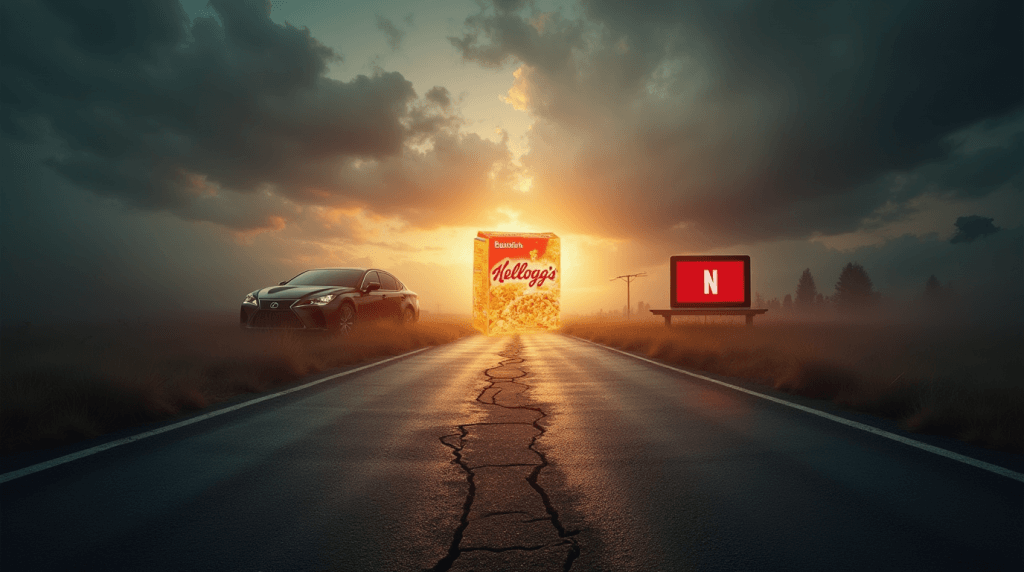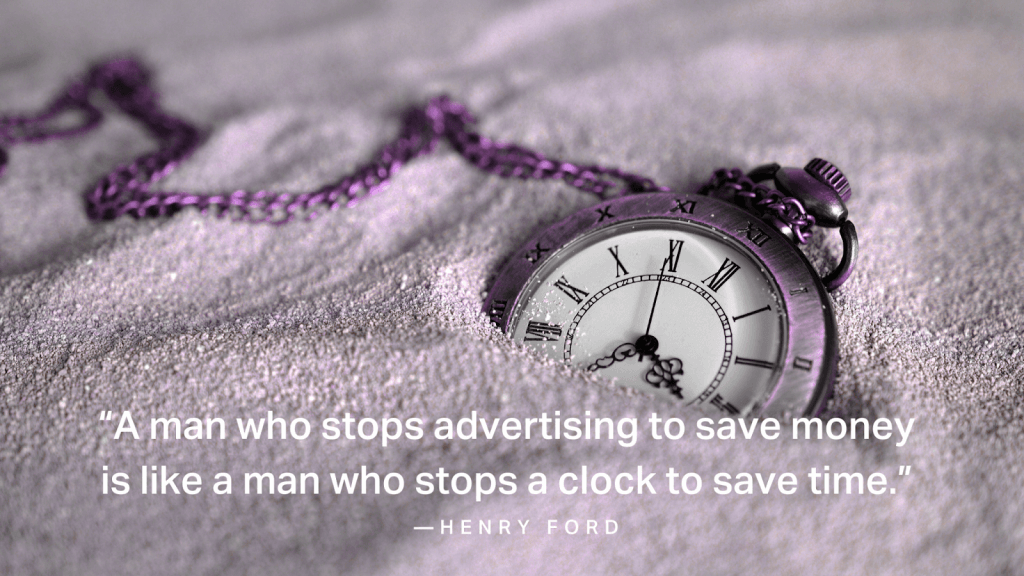Why Savvy Brands Don’t Go Dark When the Market Dips
When the economy shows signs of strain, marketing budgets are often the first to face the chopping block. But cutting back on advertising during a downturn may be one of a brand’s costliest decisions. Historical data and market analysis reveal a compelling truth: brands that continue to invest in advertising during economic downturns often emerge stronger, more visible, and more profitable than those that pull back.
Lessons from the Past: Growth in the Eye of the Storm
In the early 1980s, amid a brutal recession, most businesses pulled back on advertising. But not all. According to McGraw-Hill’s “Laboratory of Advertising Performance,”
Companies that maintained their marketing spend through the 1981–82 recession saw 256% more growth over the next five years than those that cut back.
That wasn’t luck. It was strategy.
Fast forward to the early ’90s. As the economy contracted, McDonald’s trimmed its ad spend and saw a 28% drop in sales, according to a Forbes article. Meanwhile, Pizza Hut and Taco Bell seized the moment, increasing their investment. Their reward? A 61% and 40% rise in sales, respectively.
And then there’s the 2008 crisis. While most companies tightened their belts, Amazon placed bets on technology, marketing, and momentum. That year, according to its annual report, it grew 28%. Blockbuster chose the opposite path. Today, one is a tech titan, and the other is a cautionary tale.
The message is clear: consistency builds trust, and visibility drives recovery.
Why Advertising in a Downturn Delivers High ROI
1. Lower Competition, Higher Impact
When many brands go quiet, your message gets amplified. Media costs fall, and your share of voice increases disproportionately to what you spend.
- Digital advertising costs can drop by up to 30%.
- TV ad rates fall between 9% and 12%, and print media rates drop by roughly 18%.
That means you get more exposure, often for a smaller budget and less competition.
2. Consumers Are Still Paying Attention—Just Differently
Consumers don’t stop spending in downturns; they become more discerning. According to the U.S. Bureau of Economic Analysis, savings rates dropped from 7.5% to 3.4% year-over-year, even as inflation and cost-of-living pressures increased.
This shift creates opportunity. People look to brands that feel stable, essential, and in tune with their needs.
This is your opportunity to:
- Show stability through consistent presence
- Demonstrate empathy and understanding
- Highlight long-term value, not just price
Brands that remain visible with the right message win lasting loyalty.
Icons Forged in Crisis
Some of the most enduring brands grew out of economic uncertainty:
During the Great Depression, Kellogg’s doubled its advertising budget while rival Post cut theirs. According to Forbes, the result was that Kellogg’s introduced Rice Krispies, grew profits by 30%, and secured market dominance that would last for decades.
In 1990, Toyota launched Lexus into a contracting auto market while American automakers slashed their marketing. That decision didn’t just succeed—it helped cement Lexus as a luxury leader.
In the last great downturn, Netflix doubled down on marketing and streaming infrastructure, while Blockbuster didn’t. That divergence shaped the entire media landscape we know today.
These brands didn’t just survive—they reinvented themselves and set new standards.
What Message Resonates When the Market Doesn’t
So what do you say when wallets tighten and uncertainty rises? You speak with empathy and value.
Recession-era advertising is most effective when it focuses on what matters to your audience:
- Value and Durability: Explain why your product is a wise investment.
- Empathy: Speak to the real challenges your customers are facing.
- Community: Frame your brand as part of the solution, not just a seller.
People remember how brands make them feel, especially during hard times.
Case in point: Hyundai’s 2008 “Assurance” program let customers return cars if they lost their jobs. While the auto industry declined 22%, Hyundai gained share and trust.
The lesson? Don’t just sell. Stand for something.
Let your message say: “We’re here, we’re listening, and we’re in this with you.”
Digital Channels: Your Best Friend in a Downturn
Digital is built for downturns. It’s targeted, measurable, and cost-efficient—three things every marketer needs in tight conditions. Research from Millward Brown shows that 88% of consumers notice digital brand ads during recessions. TopLine custom research found that brands that optimized their media mix saw 39% more impressions without increasing spending.
Now’s the time to lean into:
- Content marketing that answers fundamental questions
- Social engagement that builds community
- Direct outreach that nurtures your best customers
Digital gives you the agility to test, learn, and grow when it matters most.
The Hidden Costs of Going Quiet
Yes, pulling back on advertising may offer short-term budget relief. But it often comes at a long-term price.
According to Harvard Business Review and AdAge, companies that go dark during recessions face:
- 2–4% market share loss that can persist for years
- 20–30% longer recovery time
- 3–5x more investment needed later to regain brand equity
And perhaps the most overlooked danger: your brand becomes forgettable just when loyalty matters most.
Final Thoughts
Economic downturns test every part of a business, but for the bold leaders, they’re also moments of uncommon opportunity. Brands that stay present, relevant, and empathetic in hard times often earn the trust and loyalty that fuels success when recovery comes.
So don’t go dark. Go bold.
Want to keep your brand visible and impactful—even when the market dips?
TopLine research helps brands turn today’s uncertainty into tomorrow’s advantage.










